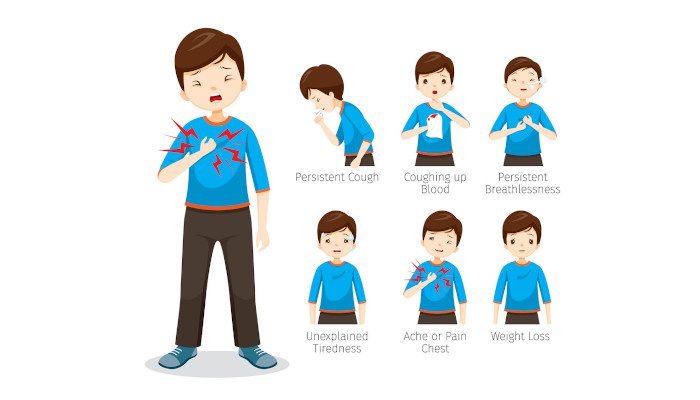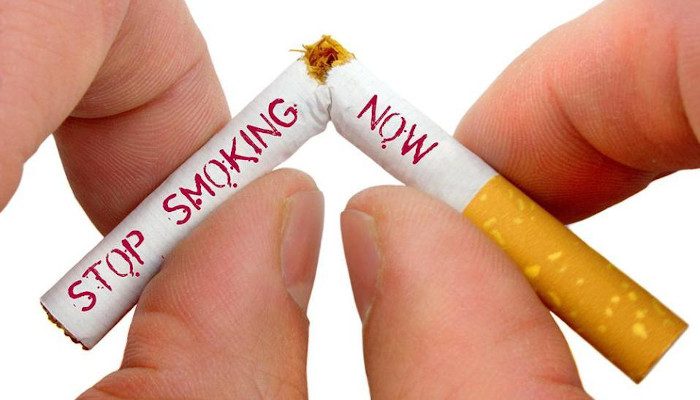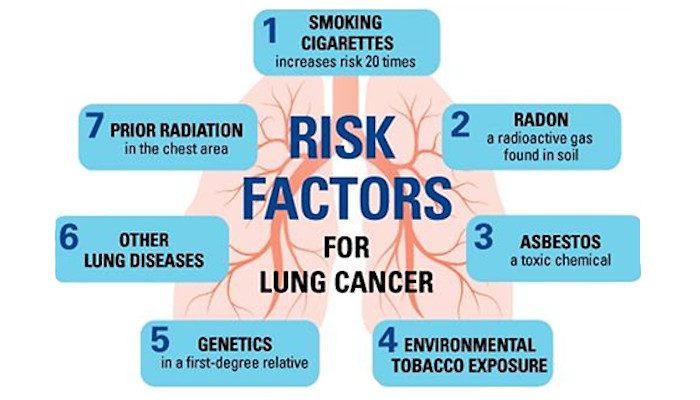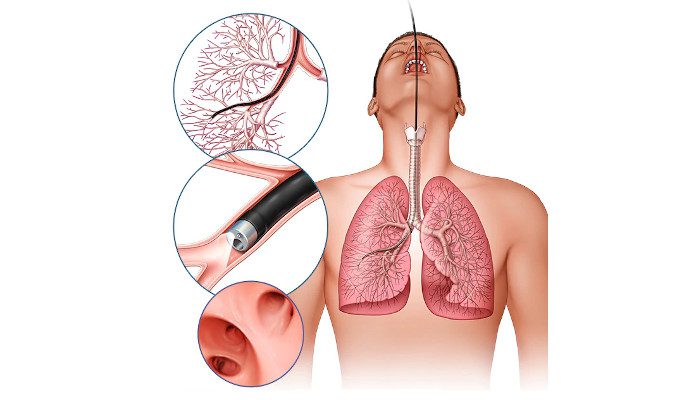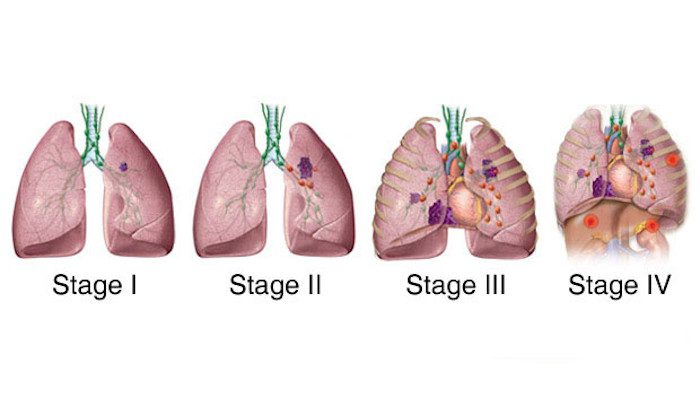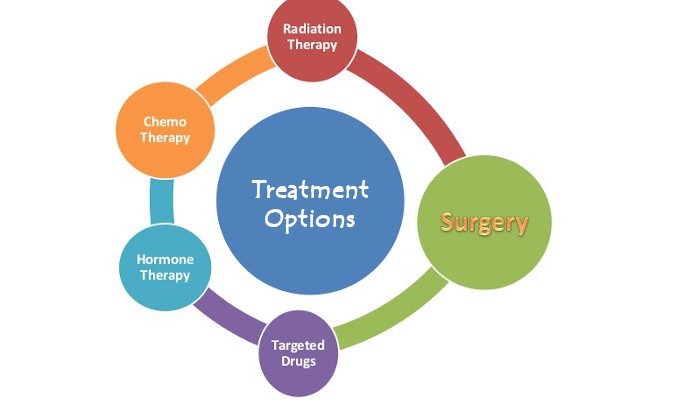Do Solar Panels Increase the Risk of Cancer?
Some people have a myth about solar panels that they release dangerous radiation, which is harmful for human beings and leads to cancer. But the fact is that all these myths about solar panels are false. Up till now, there has been no evidence found that proves that the solar panel or radiation causes cancer.
In this rapidly technological age, it is very important for people to take care of their health. But solar panels are made with non-toxic silicon cells, and it is this beneficial strategy that reduces the risk of lung cancer. Because the electricity that is generated by these solar panels is direct current and doesn’t generate electromagnetic fields. In fact, it improves the environment by reducing emissions from natural gas fracking. All type of cancer can be cured with Cancer treatment. In this article, you will read about the cancer myths of people related to solar panels in detail.
How is solar energy produced by solar panels?
Normally, solar panels are placed on the roofs of homes, businesses, and solar farms. These panels use solar technology known as photovoltaic (PV) technology. When the sun emits solar radiation, then the cells in the solar panel use photovoltaic technology to absorb the radiation and then convert it into electricity. After this, people store this electricity in batteries.
And in large power plants, solar panels use solar technology known as concentrating solar-thermal power (CSP) and then turn it into electricity.
Can Solar Panels Cause Cancer?
Domestic solar panels are made up of silicon that is completely safe for humans. And solar panels have a protective covering of glass that prevents human exposure. As a result, people do not come into direct contact with solar panels, so it is not harmful to them. Also, there is no evidence that says that solar panels are causing cancer in humans. But, it has been observed that, according to other electricity-generating sources, solar power reduces the risk of Lung cancer as it does not create any kind of pollution.
Are the materials used to make solar panels toxic?
Solar panels are generally made up of glass, an aluminum frame, plastic, and wires. The cells on solar panels are made up of silicon that is used to capture sunlight, which is totally safe for humans.
In these panels, there is a small amount of hazardous materials, i.e. lead, which is used in wiring, but it is encased behind protective glass and an aluminum frame, so there is no risk. And most importantly, people do not come into direct contact with solar panels, even if the solar panels are placed on the roof of their house.
Do the radiations emitted by solar panels pose any health risks?
Electricity comes from solar panels, and when it is transmitted to the power grid, it emits weak electromagnetic fields. In a photovoltaic (PV) system, the solar panel generates direct current, which is converted into alternating current with the help of a solar inverter. This is a source of electromagnetic (EM) fields and radio frequency (RF) radiation.
However, because they have very low-frequency radiation at the low end, neither of these radiations causes any health problems. Whereas high frequency radiation is harmful, which can lead to DNA and cell damage.
According to the World Health Organization (WHO), there has been no evidence that shows that solar panels are harmful to human health. But, if there is any health issue that exists from low-level electromagnetic fields, then it will be very small compared to the other health issues that occur in people.
Altogether, solar panels and its radiation do not cause cancer in humans but it provides benefit like it reduces the air-pollution which leads to lungs cancer. For the treatment of lung cancer, you can visit the best cancer hospital in Delhi.
Keep yourself confident and fight all the odds, no matter whether it’s life threatening disease or any harsh situation. Coming to the point, our lungs are two pliable organs in our chest that allow us to breathe in oxygen and exhaust carbon dioxide.
The largest cause of cancer-related fatalities globally is lung cancer.
Lung cancer can affect persons who have never smoked, although smokers are at a higher risk than nonsmokers. The quantity and frequency of cigarettes you’ve smoked are related to your chance of developing lung cancer. Even after years of smoking, quitting can greatly lower your risk of developing lung cancer.
Symptoms
In its early stages, lung cancer often exhibits no signs or symptoms. Lung cancer signs and symptoms often appear when the condition is advanced.
Lung cancer symptoms and signs may include:
- A chest infection that just started
- Spitting out blood, even a little bit of it
- Breathing difficulty
- Chest pain
- Hoarseness
- Dropping weight without trying
- A bone ache
- Headache
Types of lung cancer
Doctors classify the disease into two main categories based on how lung cancer cells look under a microscope. Depending on your primary form of lung cancer, your doctor will decide how to proceed with therapy.
The following are the two primary types of lung cancer:
- Small cell lung cancer:
Small cell lung cancer is less prevalent than non-small cell and nearly exclusively affects heavy smokers.
- Non-small cell lung cancer:
The phrase “non-small cell lung cancer” refers to various lung malignancies. Squamous cell carcinoma, adenocarcinoma, and large cell carcinoma are non-small cell lung malignancies.
Risk factors
Several variables may impact your chance of developing lung cancer. You may reduce certain risk factors, like smoking, by giving them up. Additionally, circumstances like your family history are beyond your control.
Lung cancer risk factors include:
- Smoking:
The number of cigarettes you smoke daily and the length of time you have smoked raise your chance of developing lung cancer. You may dramatically reduce your risk of lung cancer by quitting at any age.
- Exposure to passive smoking:
Even if you don’t smoke, being around secondhand smoke raises your chance of developing lung cancer.
- Radiation treatment that has come before:
You may be at a higher risk of developing lung cancer if you’ve had chest radiation therapy for another form of cancer.
- Exposure to other cancer-causing agents, such as asbestos
Your chance of developing lung cancer can arise if you work with asbestos and other cancer-causing agents, including arsenic, chromium, and nickel, especially if you smoke.
Prevention
Although there is no certain strategy to avoid lung cancer, you can lower your risk by:
- Avoid smoking:
Never start smoking if you haven’t already. Talk to your kids about quitting so they may learn how to avoid this significant lung cancer risk factor. Talk to your kids about the risks of smoking while they are young so they will be prepared to handle peer pressure.
- Increase your intake of fruits and vegetables.
Since they are the greatest way to get vitamins and minerals, high dosages of vitamin tablets should not be used since they may be harmful. For instance, researchers offered beta carotene supplements to heavy smokers to lower their risk of lung cancer. According to the findings, supplements raised smokers’ chance of developing cancer.
- Make an effort to exercise the majority of the time:
Start cautiously if you don’t routinely exercise.
When to consult a doctor
If you have any bothersome chronic indications or symptoms, schedule an appointment at the Delhi-based Oncoplus Hospital.
Make an appointment with our doctor if you smoke and have tried unsuccessfully to stop. Our physician can recommend methods to stop smoking, including counseling, drugs, and nicotine replacement aids.
Lung health deterioration is caused by a variety of environmental causes. Lungs are continuously exposed to hazardous elements that cause severe infections and disorders, from high levels of pollution and dust around us to climatic fluctuations. After a heart attack, chronic obstructive pulmonary disease (COPD) has been the second-leading cause of mortality.
While reducing pollution levels and mitigating the consequences of climate change will take a global effort, we can all endeavor to take better care of our lungs and maintain lung health on an individual level.
Make it a point to spend quality time outdoors in parks or lawns surrounded by lush green plants to breathe in the fresh air to maintain your lungs naturally healthy. For overall good health, doctors recommend at least 150 minutes of moderate physical exercise or 75 minutes of strenuous activity every week. To improve your breathing and heart health, try brisk walking, running, yoga, or general exercise.
Don’t smoke, it’s a no-brainer on this one. One of the primary causes of lung disease is excessive smoking. It’s also one of the most common causes of lung cancer. Smoking can restrict the airway, making breathing difficult. Smokers who have smoked for a long time are at risk of developing lung cancer.
Deep breathing allows the lungs to expand to their full capacity, making breathing easier. During the course of a day, we are all guilty of not breathing deeply enough. Deep breathing is no longer an automatic response as we become older.
Shallow breathing can harm your lungs since muscles that aren’t exercised or developed on a regular basis tend to go dormant. It can also lead to a variety of respiratory problems and, in the long run, cardiovascular disease.
Pay attention to your general health. To counteract the effects of environmental causes and reverse the effects of smoking, we must take personal responsibility for our poor eating habits, sedentary lifestyles, and fitness neglect.
Following a decent physical routine, eating a well-balanced diet, managing the sleep cycle, increasing supplement intake, and using detoxifying syrups are just a few of the ways we can improve our health.
Keep yourself hydrated. Water is just as necessary for the lungs as it is for any other component of the body. According to experts, the mucosal line in the lungs remains thin because we drink a lot of water during the day. The lungs will function better and you will be able to do more strenuous activities if you stay hydrated.
A healthy diet is essential for the lungs to function properly. Constantly eating overly processed foods can harm your lungs, but a well-balanced diet rich in fruits and leafy vegetables can help lower the risk of COPD and alleviate its symptoms.
It’s also crucial to keep track of your iron intake. It serves as a building block for haemoglobin, a protein found in red blood cells that transports oxygen throughout the body. You may experience extra-time when your haemoglobin levels are low, which is also an early indicator of lung infections and disorders.
Exercising is beneficial to your lungs. It helps you maintain a healthy weight and body, as well as optimal lung health. As you breathe properly throughout workouts, the mucus in your lower lungs clears. This improves the efficiency of the lungs in delivering oxygen to the bloodstream and removing carbon dioxide from the body. Pick a physical activity that you enjoy and do it for at least 30 minutes five times a week. Other possibilities include going to the gym and taking morning walks. If walking alone is too monotonous, enlist the help of your friends.
Lung infections are caused by a variety of environmental causes, including dust, hazardous pollutants, and harmful chemicals that we inhale on a daily basis. External variables that affect the health of our lungs are beyond our control. But, as we’ve seen, there are a few easy things that each of us can do in our daily lives to naturally cleanse our lungs and keep them healthy. Let’s make a plan and get started on our journey to healthier lungs and bodies today.
Lung cancer mostly occurs in older adults. The average age at the time of diagnosis of Lung Cancer is around 70. People who have exposure to tobacco smoke and a few chemicals can greatly increase the risk of getting lung cancer. Studies state more than 90% of all lung cancer cases are due to cigarette smoking, inhaling harmful, cancer-causing substances, or carcinogens, damages the cells that line the lungs. Examples of such carcinogens are cigarette smoke, asbestos and radon.
Asbestos is anmanufacturing material, which is used in construction for insulation and as a fire retardant. When the material is moved, small fibers become airborne and can be inhaled. One is at a greater risk for developing lung cancer if exposed to asbestos on a regular basis.Radon is a gas, which happens naturally with the breakdown of uranium in rocks and soil. It’s odorless, colorless, and tasteless. It is difficult to detect and one could be exposed without knowing it.
At first, the body is able to repair itself, but with recurrent exposure the cells getmore and more damaged. After some time, the cells start acting abnormally and grow irrepressibly. This is how the cancer starts. There are a few risk factor, which contribute to Lung Cancer such as smoking tobacco is the number one risk factor for lung cancer.
Tobacco smoke contain more than seven thousand chemicals, many of which are carcinogenic.Examples of carcinogenic chemicals contained in tobacco smoke are carbon monoxide and nitrogen oxide.
Smoking a cigarette instantly triggers a change in lung tissue. Initially, the body may be able to repair the damage, but its ability to repair lowers as exposure continues. The more frequent and the longer people smoke, the greater are the chances for developing lung cancer. Often radiation therapy, which is used to treat other cancers like non-Hodgkin’s lymphoma and breast cancer can also increase the risk and can be from the causes of lung cancer. This risk is much higher for smokers.
Even if people don’t smoke, being exposed to secondhand smoke can increase the risk of lung cancer. Studies state thatif a member in the immediate family has had lung cancer, one might have a slightly higher risk for developing this disease.
This heightened risk is true even if you don’t smoke. It’s not clear if the genetics causes lung cancer or merely increases a persons susceptibility to it.
A balanced diet gives the body essential vitamins and minerals it needs to maintain good health.
One should eat a diverse mix of healthy foods, including fruits and vegetables, if not, you may have an increased risk of lung cancer. This is extremely important if you smoke.
Lung cancer can’t always be prevented. One of the best ways to prevent lung cancer is to not smoke or to quit smoking if you do.Reducing exposure to diesel exhaust and radon can also help in preventing lung cancer.
Consuming a diet rich in fruits and vegetables and getting enough vitamins and minerals can help improve the overall health, which can assist in preventing lung cancer.
Talk to leading oncologists at Oncoplus Hospitals, Defence Colony, New Delhi, which is one of the best cancer hospitals in Delhi if you believe you may be at risk for lung cancer or are experiencing any of its symptoms; a cough (often with blood), chest pain, wheezing and weight loss. These symptoms often don’t appear until the cancer is advanced.
Despite what many believe, lung cancer isn’t limited to smokers. Non-smokers are also at risk when they’re exposed to cancer-causing agents.
Abstaining from cigarettes doesn’t guarantee complete protection from lung cancer.
Smoking is the main cause of lung cancer and should be avoided. But non-smokers can also suffer from this disease.
Lungs can be exposed to carcinogens (cancer-causing substances) through other means. This may include secondhand smoke, exposure to radiation, etc.
The misconception that only smokers get lung cancer is harmful. It stigmatizes patients by creating a false impression that they are responsible for their condition. It may also cause people who don’t smoke to dismiss symptoms. They may delay getting treatment until it’s too late.
So, we need to look at other possible causes of lung cancer and take precautions.
Causes Of Lung Cancer In Non-Smokers
Non-smokers may be exposed to factors that cause mutations or changes in their lung cells. Some causes of lung cancer in non-smokers include:
- Secondhand smoke: A non-smoker’s risk of getting cancer increases with the amount of secondhand smoke they inhale near a smoker. The smoke may come from the lit end of a cigarette or might be exhaled during smoking. Both kinds are hazardous to health.
- Radon exposure: Radon is the next greatest cause of lung cancer after smoking. The gas may be present in buildings. It breaks down into tiny particles that damage lung cells.
- Asbestos exposure: Many old buildings have materials that contain a cancer-causing mineral called asbestos.
- Radiation: Exposure to radiation, like during radiation therapy, might be a cause.
- Family history: People with relatives suffering from lung cancer are at risk of it.
- Genetic: Mutations in lung cells may lead to cancer.
- Air pollution: Areas with high air pollution see a high number of cases.
Symptoms
Most people don’t develop symptoms until the advanced stages of lung cancer. These may include:
- A new cough that persists
- Blood in cough (even small amounts)
- Shortness of breath
- Chest pain
- Hoarse voice
- Pain in bones
- Unexplained weight loss
- Headache
Consult your doctor if any of these symptoms persist and worry you.
How To Prevent It?
Preventing cancer isn’t always in our hands but you can reduce the risk with the following steps:
- Do not smoke: Every cigarette you have increases your risk of getting cancer dramatically. While abstaining from smoking isn’t a foolproof way to avoid cancer, it’s one of the most effective ways. So, don’t start smoking even out of curiosity.
- Avoid secondhand smoke: Request smokers to avoid smoking near you. Avoid areas where people like to smoke. Seek non-smoking zones when going out.
- Eat fruits and vegetables: A healthy diet with different types of fruits and vegetables can reduce the risk considerably. They are rich in vitamins and other nutrients. But you should avoid vitamin supplements because they may increase the risk according to some researchers.
- Avoid carcinogens at work: If your work involves dealing with chemicals, you need to take precautions to avoid inhaling them. Follow safety guidelines set by the employer and wear safety kit provided for the job.
- Exercise: Working out most days of the week can reduce the chances of getting the disease.
It takes a few tries before you can overcome smoking addiction. You need to distract yourself from the cravings to quit smoking.
Abstaining from cigarettes and other tobacco products is hard. But it is the right step towards a healthy life.
You may notice your heart rate become normal just twenty minutes after quitting. It reduces the risk of cardiovascular disease, lung cancer and chronic obstructive pulmonary disease.
Many smokers are aware of the health risks but are unable to quit. They get strong urges when they try to quit, due to which they tend to relapse. But you can overcome the hold these cravings have on you.
Schedule Quit Day
Some preparation before quitting can be helpful. Decide when to quit, preferably within the next few weeks. You can either reduce your intake until the quit day or continue as you do before going cold turkey.
Clean Up
You need to remove smells and sights that remind you of smoking from your home and car. Dispose of cigarettes, ashtrays and lighters. Wash your clothes, carpets, etc. and use air fresheners.
Consider Nicotine Replacement Therapy
Nicotine replacement therapy can help you resist cravings. Your doctor may recommend:
- Nasal sprayer or inhaler with prescription nicotine
- OTC nicotine patches, lozenges or gum
- Prescription medicines without nicotine like bupropion and varenicline.
Take Help
Inform your family and other close ones about your decision to quit smoking. People who have successfully quit can be helpful. Request other smokers to not smoke near you.
You can sign up at a support group. Many groups offer free counselling and nicotine patches.
Resist
Resist the temptation to have just one drag. The temptation usually passes after ten minutes. Distract yourself through other activities like chewing gum, exercising, etc.
Identify Triggers
Your urge to smoke might be the strongest during some situations. Identify and plan how to deal with them.
For example, if you light a cigarette when drinking alcohol, cut your intake. If it happens when you talk on the phone, doodle with a pen to keep your hand busy during the call.
Unwind
Stress is one of the most common triggers of smoking. Avoiding stressful situations can reduce urges considerably.
Try relaxation techniques like yoga and tai chi. Exercise to blow some steam, make time for your hobby or get massage therapy.
Become Active
Physical activity is effective at distracting you from the temptation to smoke. It doesn’t have to be intense. Even short bursts like running on the stairs or taking a walk can help.
Think Of Your Motivation
Different people have different reasons for wanting to quit tobacco products. These may include:
- Wanting a healthier lifestyle
- Wanting to live long
- Protecting loved ones from secondhand smoke
- Trying to set a good example for children
Remind yourself of your reason and motivate yourself to overcome the temptation to light a cig.
Try Again
Quitting smoking is harder than it sounds, so it’s understandable if you give in to your craving. Many people need multiple tries before they quit completely. So, don’t get discouraged by it.
Think about what triggered you to take a drag and plan for how to avoid it for your next try.
